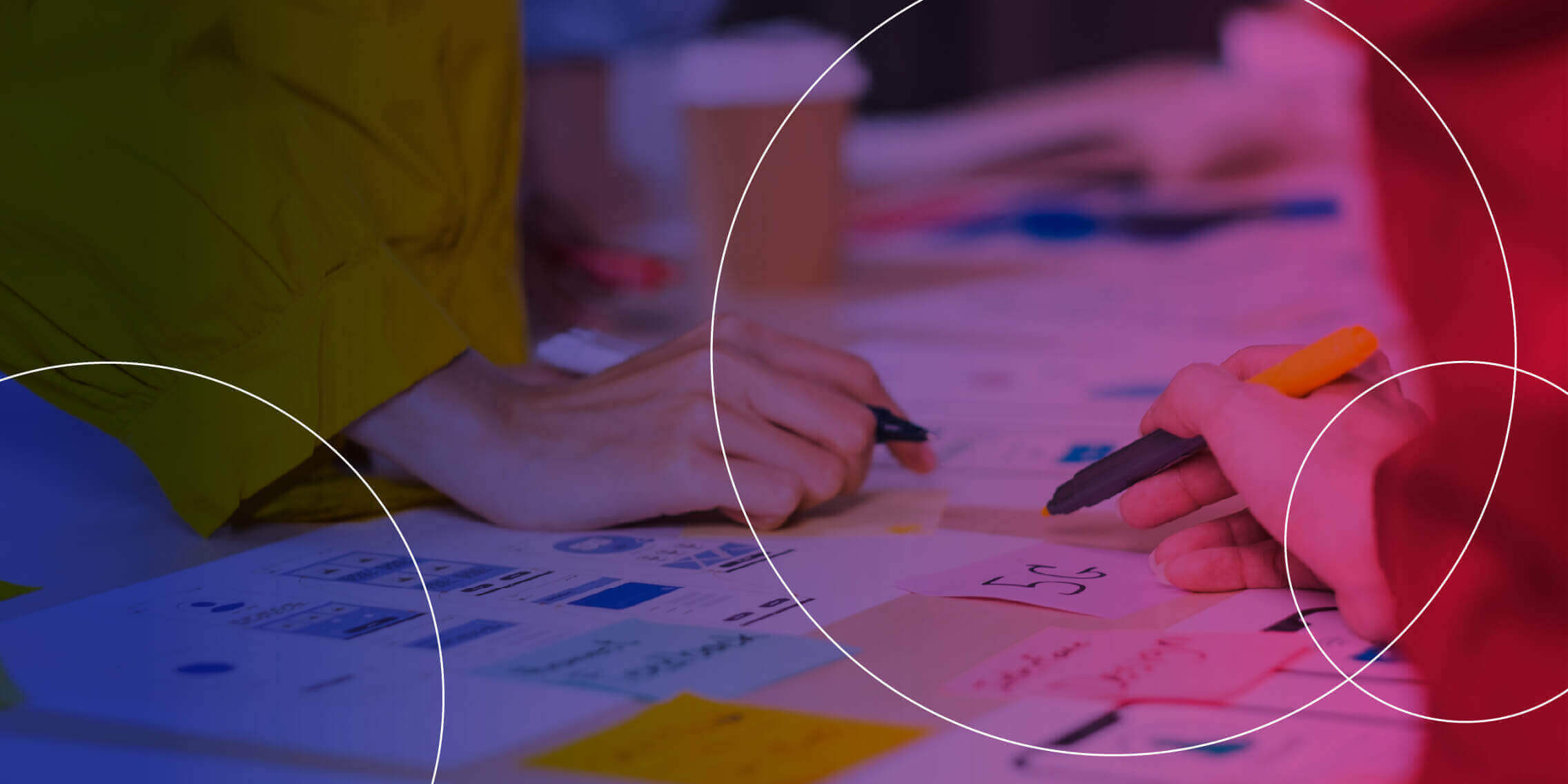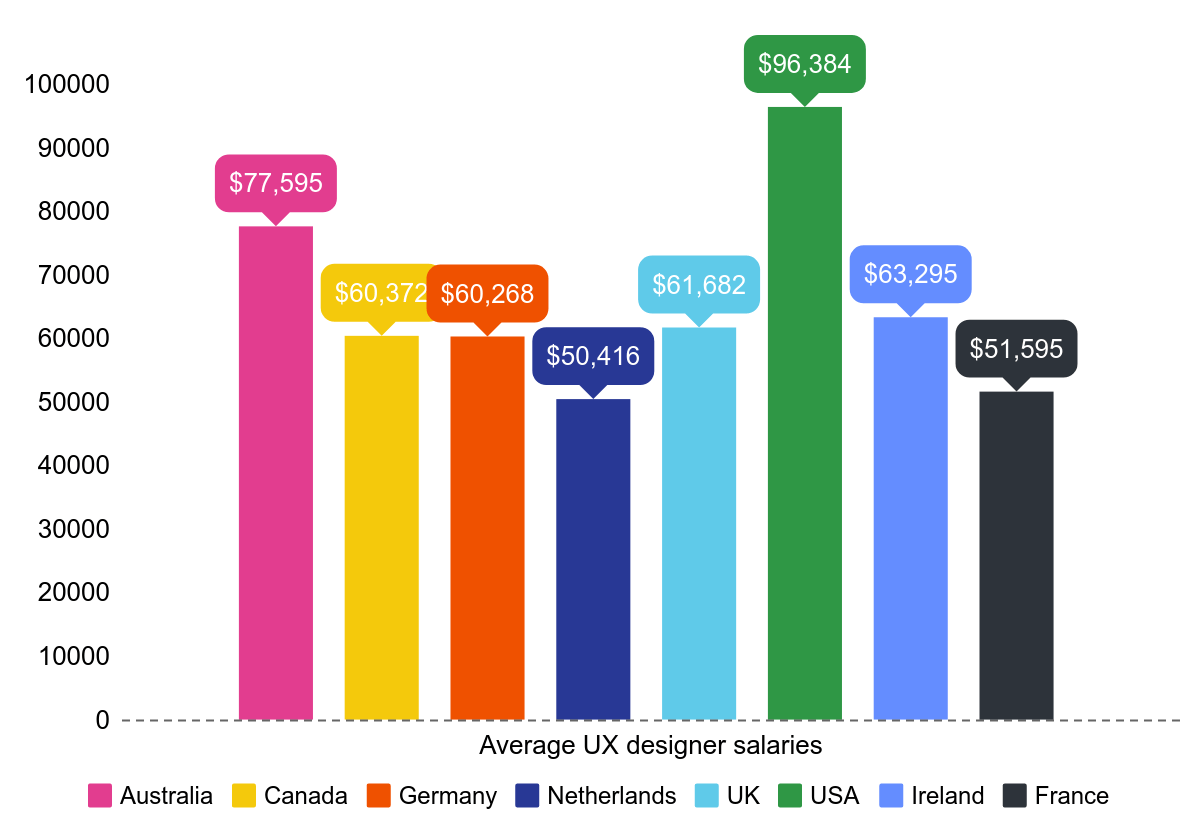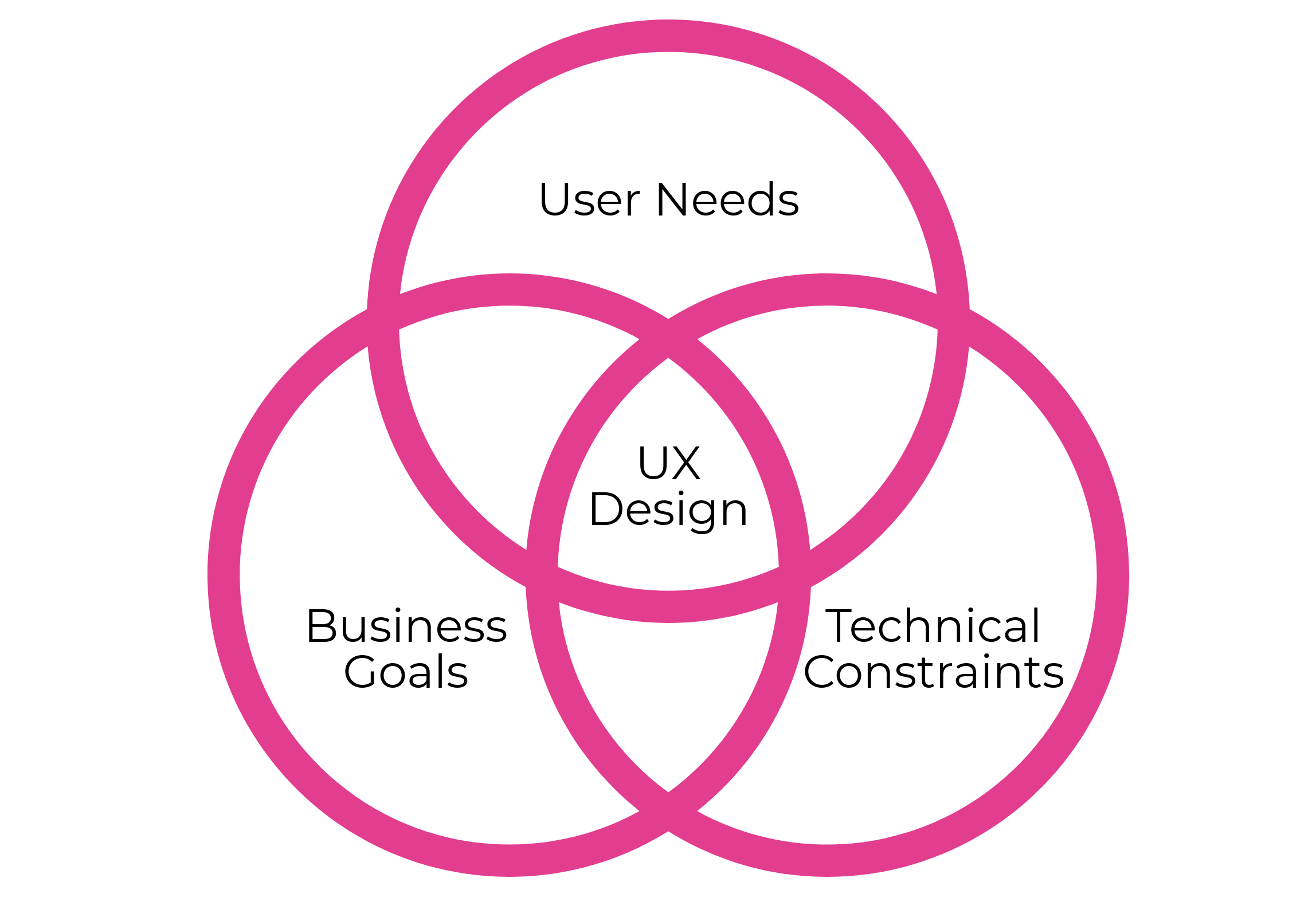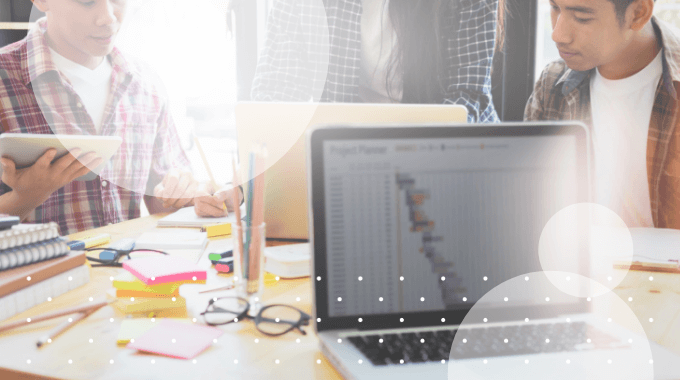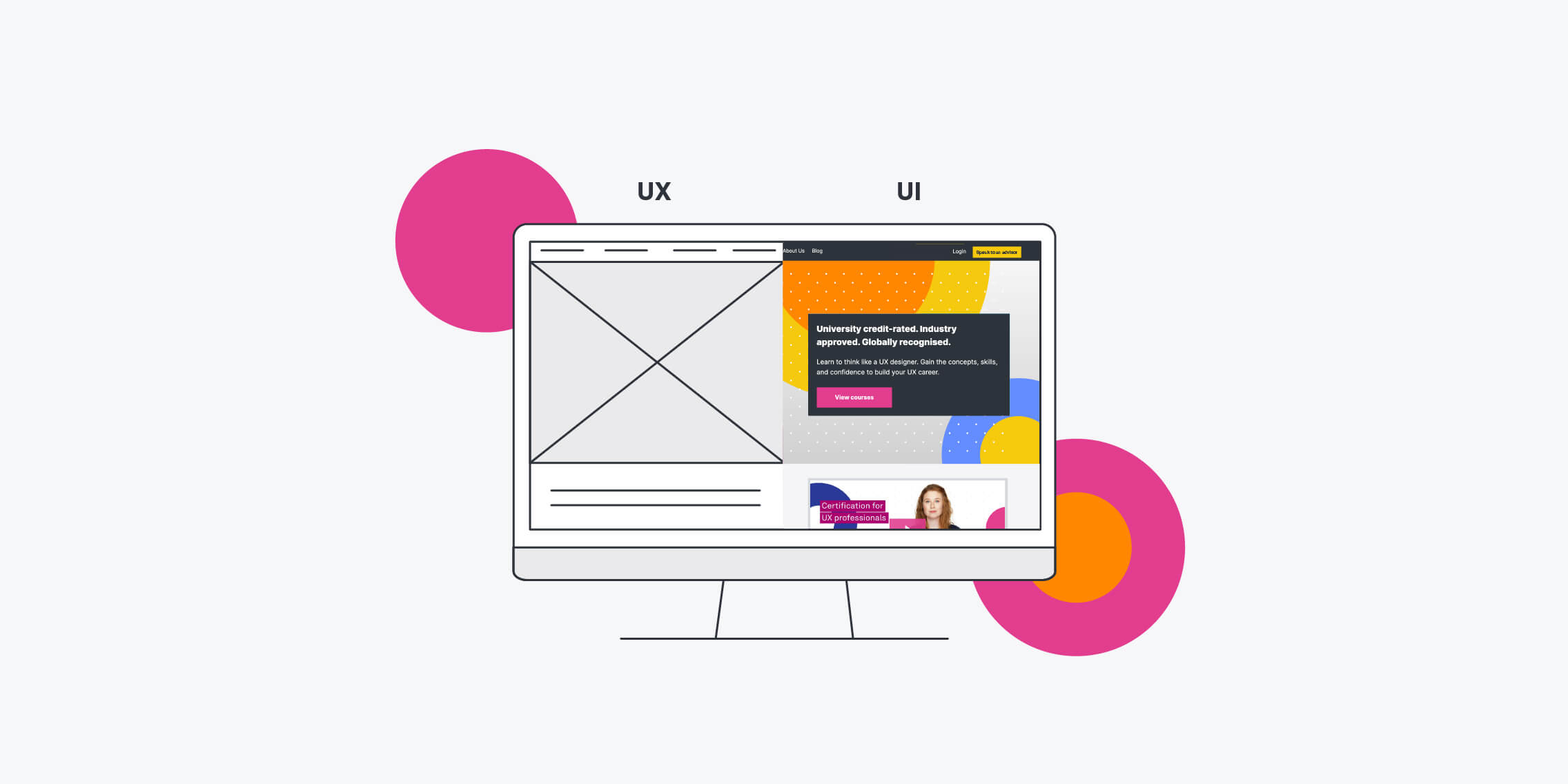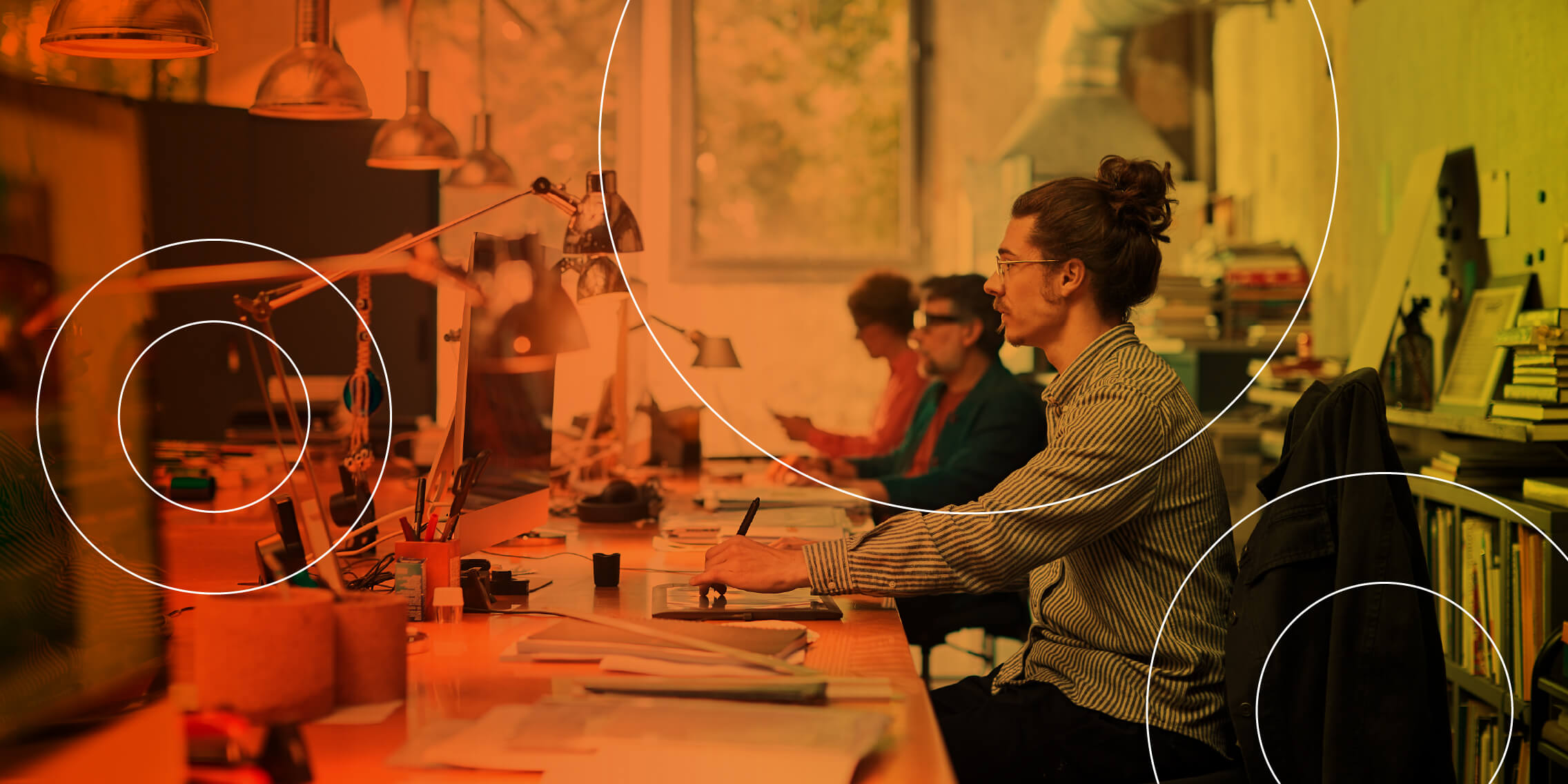If you’ve made your way to this blog, there’s a good chance you’re a graphic/UI designer looking to take on UX design work, or indeed, to make the move into an entirely UX design focused role.
And it makes sense. Over the last decade or so, as the demand for digital products has steadily increased, so has the demand for skilled designers who understand how to create interactive products that not only look good, but also communicate overall experiences that are enjoyable, intuitive and useful.
Graphic design to UX – a logical transition
Though graphic designers and UI designers certainly fall into the same ballpark as UX designers, sharing some common skills and some similar approaches to design thinking; the disciplines are distinct in a number of ways. And if you want to be taken seriously as a UX designer, there are a few steps you’ll need to take in order to make your transition from graphic design to UX as smooth as possible.
It may sound daunting but don’t worry, we’re here to help.
UX design is a great industry to break into, as the barriers of entry are comparatively low when you consider other high-paying industries – particularly in tech. And as a graphic designer, you’re already halfway there!
Let this article serve as a step-by-step guide (and your first port of call for research) on the moving from graphic design to UX process.
In it, we’ll cover the particularities of a UX designer’s day to day responsibilities, the similarities and differences between the graphic design and UX process, the common skills both parties share, as well as the new skills and mindset shifts you’ll be expected to take on in a UX design role. Finally, we’ll consider a suggested roadmap you can plan out for yourself to achieve your goal of becoming a fully fledged UX designer.
But first, let’s consider why you’d want to make the move from graphic design to UX design in the first place:
Why pursue a career in UX design?
There are three main reasons why more and more graphic designers are seeking to learn UX skills or transition fully into UX design. Demand, salary expectations and role diversity.
1. Demand for skilled UX designers:
Whether it’s the increased demand for specialist UX design roles and UX freelancers or indeed, (and of interest to graphic designers looking to expand their design skills) the rise of the cross-functional designer; it’s clear that the huge and growing demand we’ve seen for UX designers over the last number of years, shows no signs of slowing down.
If you’ve got the requisite skills to excel in UX design, the work is there for you. And as technology progresses, the need for exceptional digital products will only increase. In the current climate, it’s a pretty safe bet that UX design has a future-proofed career trajectory.
2. Lucrative salary opportunities:
With the increased demand (often outstripping supply) for skilled UX designers, comes competition from big industry players hiring for those positions. The upshot of which, of course, is that UX designers can secure lucrative salaries and often from quite early on in their careers.
For example, in Ireland, a UX design lead with five years experience earns €70K+ per year. In the US that figure rises to €86K+ and if you’re lucky enough to live and work in Switzerland, you could be looking at an annual salary of €90K+ with the same level of experience. Figures across other countries around the world show salaries that are just as attractive.
So now that we’ve got a handle on why you’d want to make the move into UX, let’s take a look at what a role in it looks like, and how you can begin your journey.
3. A meaningful career full of variety:
Here at the UX Design Institute, we’ve found that many graphic designers are attracted to UX design because the role offers a lot of variety where no two days are ever the same. The multi-tiered and cyclical nature of the UX process requires critical thinkers who can and like to use every part of their brains to solve problems.
The clear focus on creating positive holistically memorable experiences means that it’s also a role where your designs can make a significant impact on the lives of product users, giving real and lasting meaning to your work.
What is UX design?
First things first, to explain what a UX designer does, we have to have an understanding of what UX design (or user experience design) entails.
The term ‘UX design’ is a relatively new one (even if the idea is conceptually quite old) with Don Norman, co-founder of the Nielsen Norman Group Design Consultancy and cognitive scientist having been credited with coining it back in the 1990s. He summarises UX design as follows;
User experience encompasses all aspects of the end-user’s interaction with the company, its services, and its products.
What about good user experience? Norman breaks it down further;
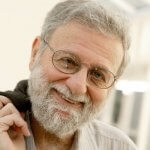
Don Norman
The first requirement for an exemplary user experience is to meet the exact needs of the customer, without fuss or bother. Next comes simplicity and elegance that produce products that are a joy to own, a joy to use. True user experience goes far beyond giving customers what they say they want, or providing checklist features. In order to achieve high-quality user experience in a company’s offerings there must be a seamless merging of the services of multiple disciplines, including engineering, marketing, graphical and industrial design, and interface design.
So in essence, great UX design intersects the needs of a business with the needs of its customers, in delivering a product that is useful, usable and enjoyable for its users at all stages of interaction.
What are the day-to-day responsibilities of a UX designer?
As we’ve covered in much more detail in our ‘What does a UX designer do?’ blog, the UX design discipline is broad and there are quite a few areas that you can specialise in as a UX designer. In addition to this, the size of the company, the team, the project as well as the level of UX maturity in any given organisation are all elements that can greatly influence the number of responsibilities a UX designer is expected to take on in their role.
That being said, there is a general multi-staged process that all UX designers generally adhere to, although some designers may specialise in certain areas of this process.
Briefly*, the UX design process looks something like the following:
- Product research (this includes both user and market research).
- Using results of research to create user persona profiles.
- Information architecture – deciding how the website or app’s information is organised.
- Wireframing – building quick, rough representations to demonstrate how the final product will function.
- Prototyping – building a high fidelity, interactive version of the product to test with users before official launch.
- User testing – test the prototype with users and make appropriate adjustments and new iterations before final product launch.
UX designers are in the business of continuous improvement which is why the process doesn’t end at product launch. Over time customer feedback helps to inform future updates to the product’s design, making the UX design process more or less cyclical.
*If you’d like a more detailed take on this process breakdown, check out our ‘What does a UX designer do?’ blog.
The graphic design versus the UX design process
Though graphic designers and UX designers share many practical skills and attributes, the biggest shift you’ll need to make when moving from graphic design into UX is much more concerned with adapting your mindset and approach to design principles rather than learning new hard skills.
To explain, let’s look at how design approaches between graphic designers and UX designers differ in four key ways.
Ideation versus research and analysis
In graphic design, the first stage of the design process is creative ideation. This is the process of generating ideas and solutions through creative means such as brainstorming and sketching among other methods. It doesn’t need to be based on extensive research and can be performed in isolation.
For UX designers on the other hand, the end-user’s wants and needs are always at the centre of their approach to design thinking. Therefore, a key part of the UX design process is based on thorough research that is both generative (to understand the needs and contexts of the user), and evaluative (where the product is tested for its usability before launch). The research stage involves a high level of interaction with, and empathy for the people who will ultimately be using the product.
Also, unlike the graphic design process, research isn’t limited to the early stages of the process and can come into play before, during or even after the final design has been launched.
Pixel perfection versus designing for use
Graphic design is very much concerned with aesthetic appeal, whereas you guessed it, UX design is much more focused on usability.
Where graphic designers strive for eye-catching and appealing perfection using creative and visually arresting imagery, UX designers are on a mission to create the best possible experience for a user. This includes not only how the product looks but also how it feels, its level of usefulness as well as how easy it is to use.
Static versus iterative
As was discussed briefly above, unlike the UX design process, graphic design is linear and stops once the design has been completed. As UX design is more cyclical, designers need to be able to be able to observe and analyse how users interact with the designs that they create so that they can identify any issues or problems that can be solved with updated design solutions.
Specialised versus multidisciplinary
Graphic designers require a very specific set of specialist skills to produce effective visuals for various applications. They need to have a deep understanding of elements such as typography, colour theory and photo manipulation software.
As we’ve discussed in relation to UX, though there are definitely specialisations within UX design, as a whole, it’s quite multidisciplinary, involving a varied mix of hard and soft skills and UX designers more often than not work cross-functionally. In order to solve for those core pillars of UX design (the look, feel and usability of a product), UX designers need to keep up to date with developments in interaction design, information architecture, user research techniques and human psychology among others.
Common skills shared by graphic designers and UX designers
Creative and critical thinking
Graphic design and UX design are both creative disciplines meaning that they require an out-of-the-box approach to thinking in order to produce design solutions that are both effective and exhibit a sense of originality that help them to stand out from the crowd.
For graphic designers this means being able to create arresting images that present information in a conventionally comprehensible way (and thus making the visual communication effective) but doing this in a way that’s still striking and original.
UX designers take a similar approach when coming up with solutions to solve users’ problems. There needs to be the right balance of convention and creative innovation in order to create the most enjoyably memorable experiences.
Emotional design
Both graphic designers and UX designers create designs that are meant to elicit emotional responses from their users. Graphic designers communicate emotion through elements such as colour and typography where UX designers focus their energies into factors such as information architecture and motion design among other things.
Prototyping
Both graphic designers and UX designers create mockups and wireframes to clients of unfinished work to give an idea of what the finished product will look like/how it will work. In doing so, the designers are able to go back and make changes as necessary before launching a final, complete product.
The difference between the two types of designers is how that wireframe or prototype is presented. For graphic designers, it’s to give an idea of how the product will look, meaning that the fidelity of the image is fairly important. However, for UX designers, it’s about how the product will function. Does the product do what it’s supposed to do? Is it useful and usable? Is it something that users would want? Questions like these are more important than aesthetic appearance to UX designers.
How to move from graphic design into UX design
At last, the burning question, now that we’ve got a good handle on what UX design entails, what steps do you need to take to make the move from graphic design into the discipline?
Check out this 5 step process:
1. Consider your edge as a graphic designer over the competition
As discussed at length above, graphic designers and UX designers share a lot of common skills and attributes which make the move from the former to the latter quite logical. What hasn’t been discussed however, is how graphic design skills specifically, can act as a great asset to a new UX designer.
A common belief about UX design is that usability is far more important than aesthetics. The reality is that quality aesthetics have been found to improve the overall user experience of a product. How? Visually appealing products create a positive first impression, make users feel more relaxed and tells the user that the designer has taken the time to show that they care about their wants and needs.
Additionally, it’s no secret to anyone that information that’s presented in a way that’s visually striking and easily comprehensible leaves a longer lasting impression. Consider how useful graphic design skills can be when it comes to communicating important information to clients and key stakeholders.
2. Level up your design skills
So, as a graphic designer you’re in a great position to move into UX but that doesn’t mean you don’t have any learning to do before you make the leap.
To really excel in UX design you’ll need to have a good handle on the UX design process outlined above, along with some practical experience.
The good news? Here at the UX Design Institute, we offer the perfect course to give you the career-ready skills you need to get there.
Our remote Professional Diploma in UX Design is entirely accessible online and is credit-rated by Glasgow Caledonian University. A hands-on practical course, you’ll learn the UX process by taking on a real-world UX project, the result of which will make for an outstanding UX designer portfolio, which you can use to showcase your work to future potential employers.
Interested in learning more? Check out the details of the course and while you’re at it, check out some success stories from our alumni.
3. Put your new UX design skills into practice
Once you can call yourself a certified UX designer, it’s time to put your money where your mouth is with some practice.
If you don’t want to move entirely away from graphic design just yet, you can use your new skills to inform your graphic design work (the same principles can inform graphic design as much as it can product design). Then along with the portfolio you created during the Diploma course, you can start to tailor your CV to highlight your skills in UX design.
4. Network with the UX community and keep up to date
UX design is a fast-moving industry, so it’s important to stay up to date on the latest trends and advancements. Join UX groups online, follow UX blogs, read books on UX and of course, follow UX influencers. If you feel brave enough, you can even start to contribute by writing for the likes of Medium about UX.
A great way to open the door on networking in the world of UX is to attend UX meet-ups and conferences. Building up a network of peers in UX will help you keep your finger on the pulse in the UX community and may even help you to get recommended for UX positions.
5. Apply, apply, apply!
Both the easiest and the hardest step after you’ve put all the hard work in – start sending out those CVs and get on the UX ladder!
Interested in reading more?
Check out the differences between UX and UI design.

